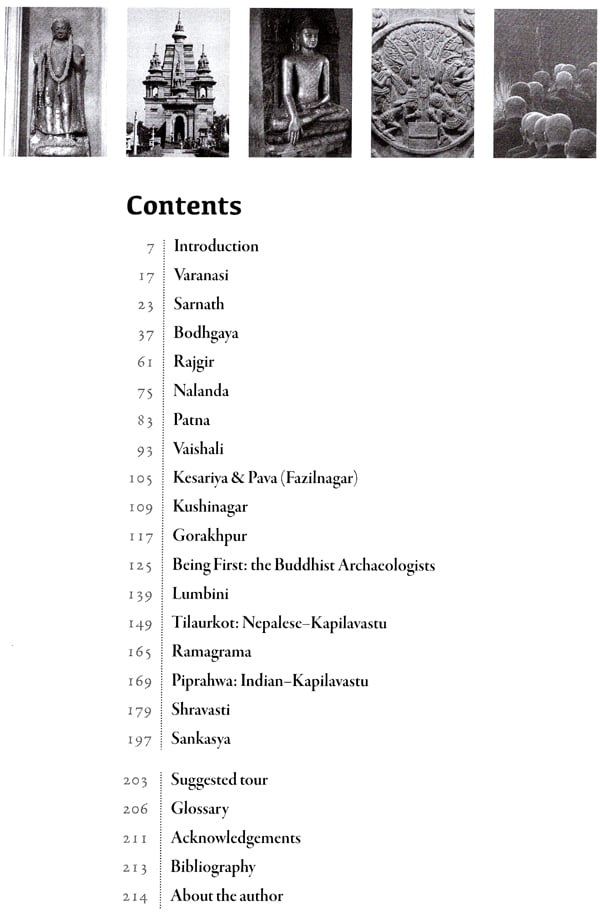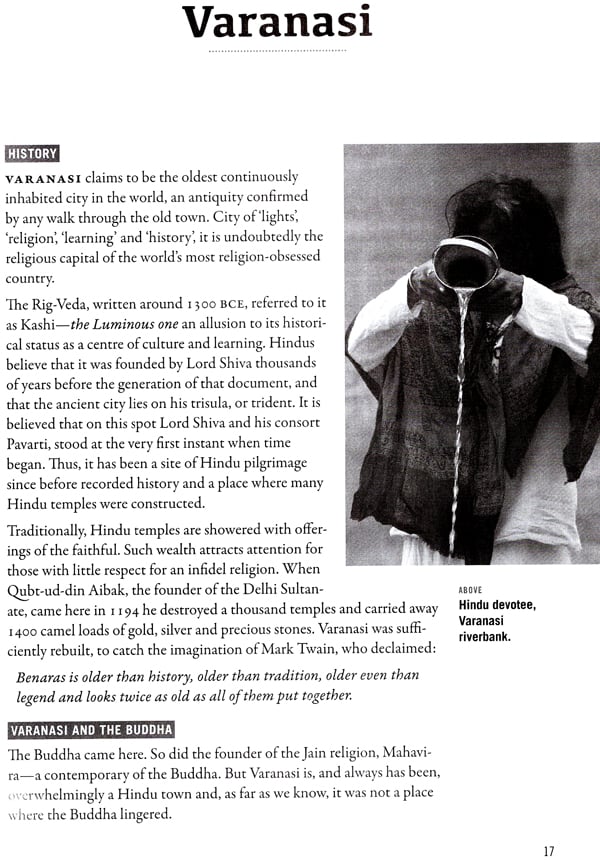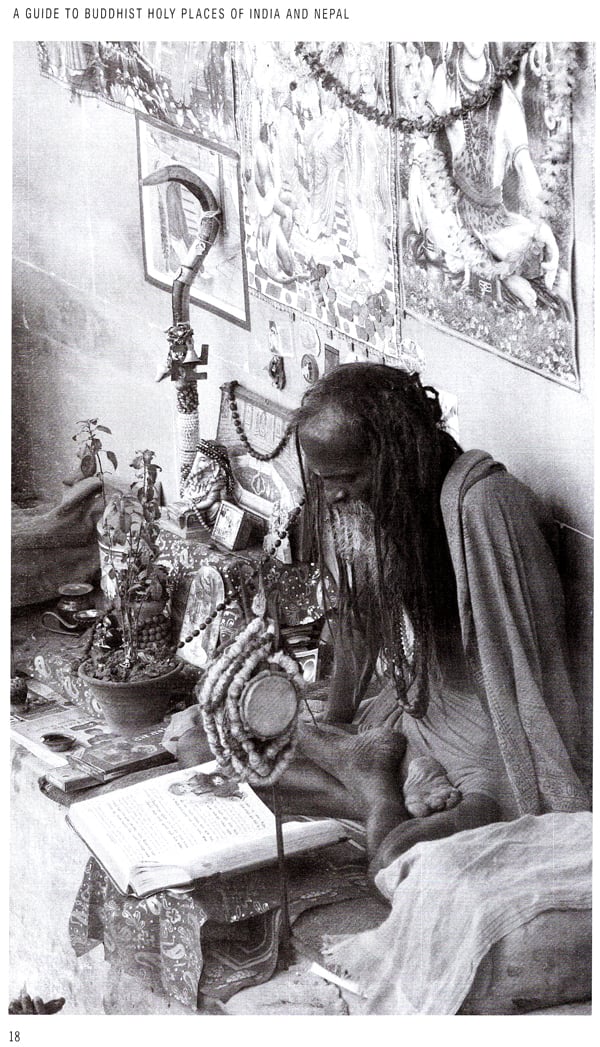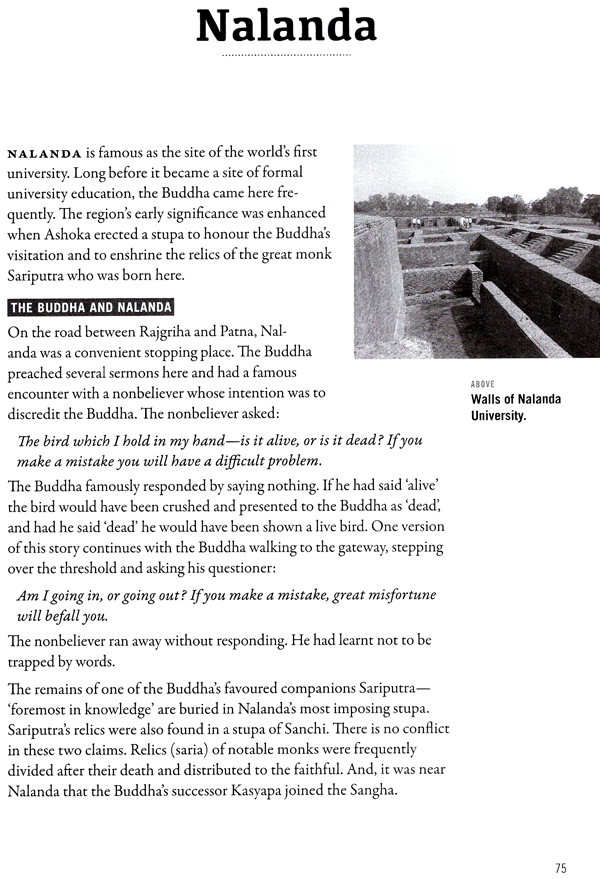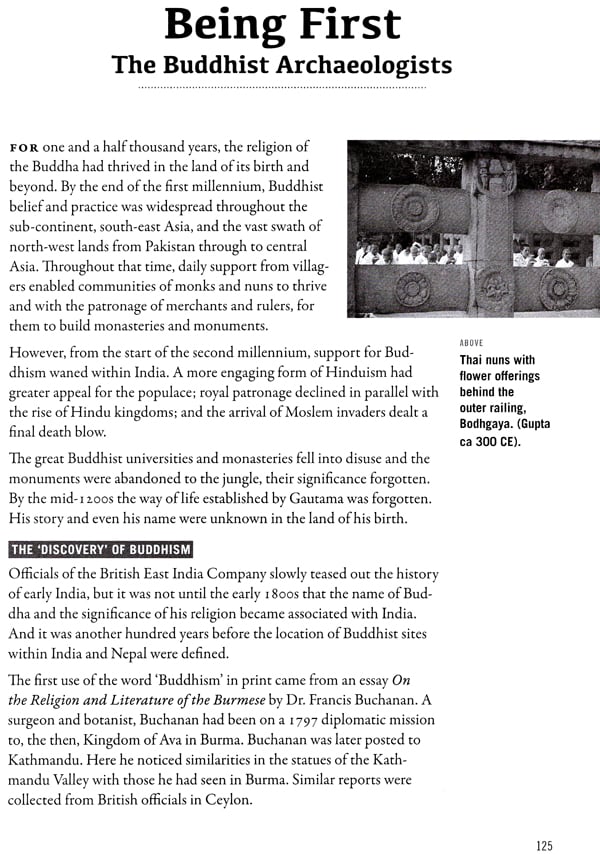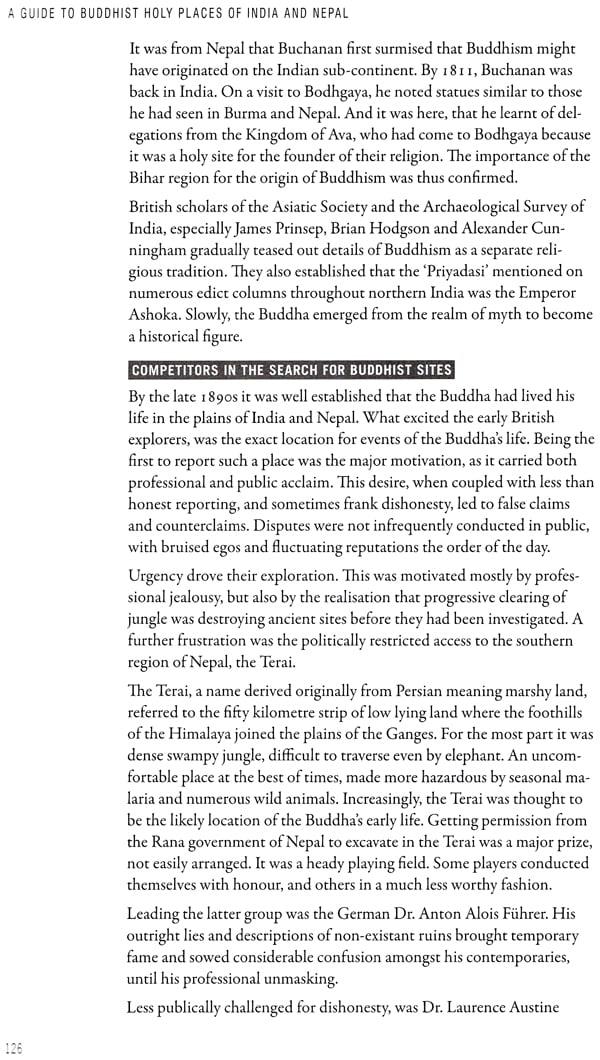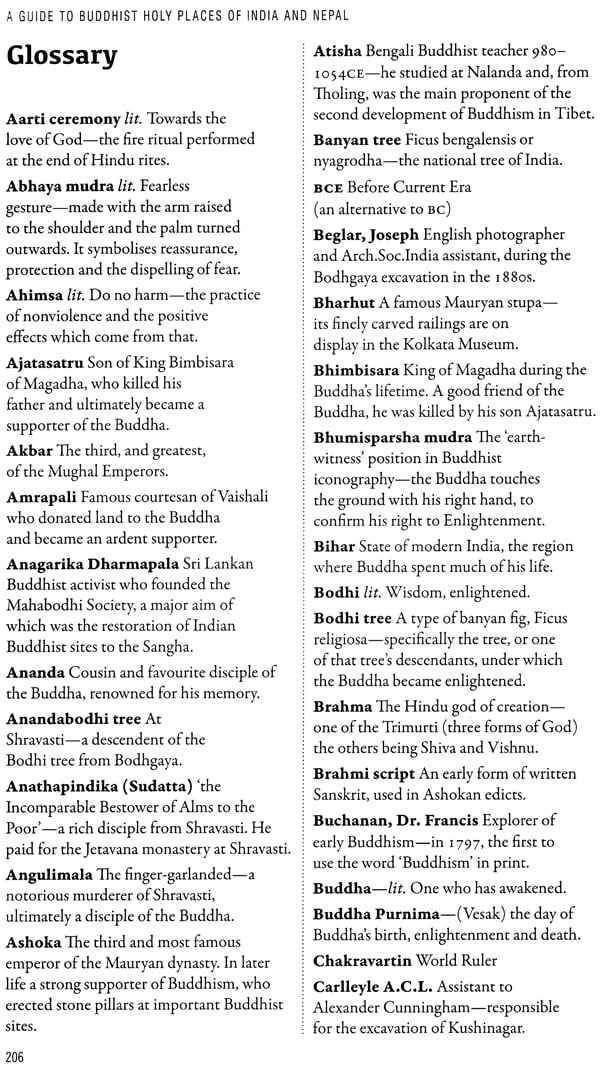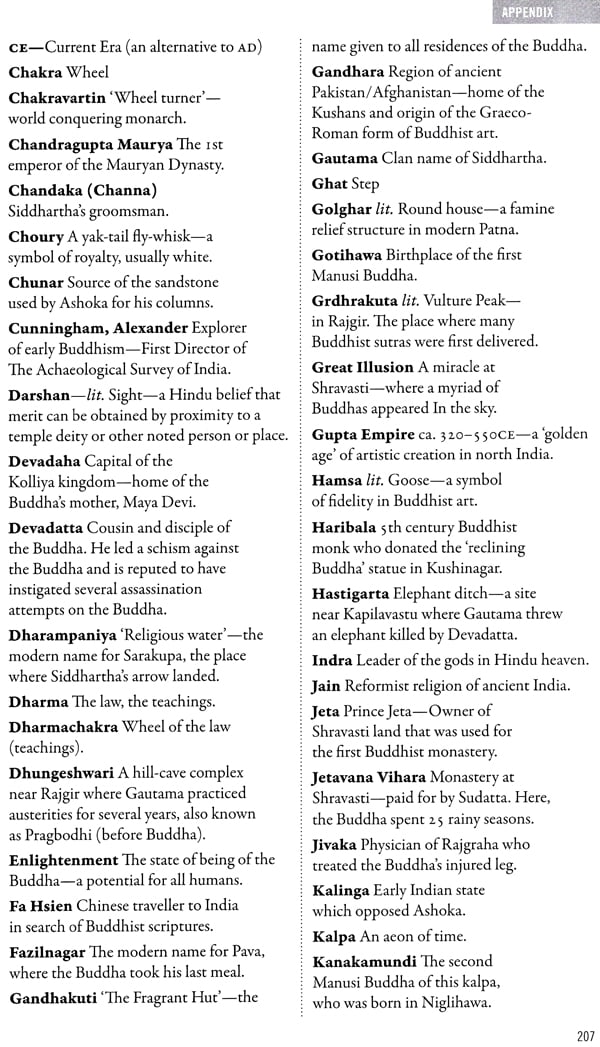
A Guide to Buddhist Holy Places of India and Nepal
Book Specification
| Item Code: | NAS412 |
| Author: | John Tosan McKinnon |
| Publisher: | Vajra Books, Nepal |
| Language: | English |
| Edition: | 2017 |
| ISBN: | 9789937623711 |
| Pages: | 216 (Throughout B/W Illustrations) |
| Cover: | PAPERBACK |
| Other Details | 9.00 X 6.00 inch |
| Weight | 330 gm |
Book Description
PLACES where the Buddha lived and taught two and a half thousand years ago are now sites of pilgrimage. A Guide to Buddhist Holy Places of India and Nepal is a book for those who have an interest in Buddhism and who aspire to visit these places. Each chapter narrates the history of that site, its significance within Buddhism, how it was discovered in modern times, and suggests how each location may be visited.
Homeland paints a picture of life on the Ganges plain during the Buddha's time. The Buddha is presented as a human being who was subject, as all humans, to the difficulties of being alive, and of dying. That he became an exceptional human being, who became enlightened, is a hope for all humankind.
John McKinnon, the author, has visited the holy Buddhist places many times since the 196os and, for more than twenty years, has been a practitioner of Zen Buddhism. As a young man, he lived in the Mount Everest region of Nepal as the first doctor at Khunde Hospital. Since then he has been continuously involved with Sir Edmund Hillary's development work in that country. A Guide to Buddhist Holy Places of India and Nepal brings this lifetime experience into focus as a practical, informative guide to the major Buddhist sites of India and Nepal.
THIS book is a guide for those visiting the major sites of Buddhism which lie on the great plain of the Ganges in India and Nepal. The main emphasis is the life of the Buddha; how each location was significant during his time; and how that history came to be known in the modern world. It is also useful for those who seek to know where and how the Buddha taught, two and a half thousand years ago. Although it discusses some aspects of what the Buddha taught, it does not seek to be a book about Buddhism.
HOW TO USE THIS BOOK
What's outlined is a tour to all the sites, suggesting where to travel and what to do on a daily basis. For geographic reasons, the tour starts in Varanasi and ends in Agra sixteen days later. The direction of travel, the number of days and what to do each day is based on the author's experience over several visits to the region. Sixteen days is an ideal amount of time to visit all the significant Buddhist sites. It could be extended or shortened and some sections deleted, if you wished. The book does not detail hotels or restaurants, or how to travel (although having your own transport is the ideal), as information about these ever-changing essentials are readily obtainable elsewhere. There are no footnotes or references, apart from a bibliography and glossary, as it is meant for the general reader rather than the specialist.
A chapter is devoted to each site. The first section of each chapter sum-marises the reason why the place has Buddhist significance and details how the Buddha, and other individuals contributed to our knowledge of that place. The 'Today' section of each chapter summarises what the modern traveller can see in each place, in the sequence that they experience them.
TRAVEL OR PILGRIMAGE?
Every visitor to India is changed, no matter how much, or how little, they may be cossetted by luxury, or how little they are attuned to the realities of life which India forces on them. It is a truism that India alters the way people think about themselves and their lives. In that sense any travel to India is a pilgrimage. How much more so therefore, when your travel is directed to walking the same paths as one of the world's greatest teachers and more so, if your intent is towards self-awareness. Whatever your intention, you can anticipate as you head to India, that the one who returns will be different from the one who left. When touring the home-land of the Buddha, we all carry the metaphorical staff of a pilgrim.
Who was the Buddha and where did he live?
Separating fact from legend is difficult for any heroic figure, and much more so when that individual lived two and half thousand years ago at a time before written records. Many claims relating to the Buddha are obviously mythical, but within those stories are aspects of Buddhist wisdom which support other more verifiable teachings of the Buddha. We can never know absolutely details of the Buddha's life but there is sufficient historical and archaeological evidence to support much of the literature and thus flesh-out the personality of a remarkable person.
It is important to appreciate that the Buddha was definitely not a mythical figure, but a real human individual, with all the joys and aches that being human involves. He was not a god and during his life he strongly discouraged those who sought to place him beyond the human realm.
As a youngster and young man he lived the 'normal' life of a privileged young person of his time. He married and had a child and then uncer-emoniously left them, to set out on a quest for personal realization. Years of effort led him to attain a state of supreme awareness which we describe (inadequately), as enlightenment. Appreciating that this change could be realised by others and that it would be transformative, was his teaching for the next forty five years. The enlightened state does not separate that person from being human, so like everyone else, Gautama suffered the human indignities of old age, of sickness and of death.
The Buddha lived all his life in the plain of the Ganges, that vast outwash of flatland created by rivers rushing southwards from the Himalaya-`the abode of the gods. He was born in what we now call Nepal, and lived the vast majority of his life, in India. During his time the area was a collection of developing princely states and early democracies, sparsely populated. Now, this region is amongst the most densely inhabited on the planet. During his time, the vast majority of people were farmers, living their lives tied to the endless cycle of seasons and harvest.
SPIRITUAL LIFE IN THE BUDDHA'S TIME
The Buddha lived during a time of considerable political and religious ferment. The Aryan peoples from central Asia, the future Buddha's ancestors, had invaded India about twelve hundred years prior to his birth. They brought with them the religious certainties of Vedic gods: Gods, who for the most part, were focused on the needs of an agricultural society. They also brought the beginnings of India's caste system-a social structure which sought stability by allocating one's position in society according to birth. At the top of the social pyramid were the Brahmin priests, whose demands on the populace for expensive sacrifice and ritual, became increasingly resented by the time of the Buddha.
A few hundred years before his birth, the rural society which had been little changed for the previous thousand years, was transformed by new iron-age technology. Jungle was more readily cleared, allowing the fertile soil to produce surplus food, and thus wealth. The Ganges plain region became the centre of Indian civilisation. Small city states developed, and with them differing forms of governance, and the rise of occupations which were not agricultural. As trade expanded around the region, rich city-bound merchants and bankers did not fit easily into the traditional caste system. The power of this group, brought about significant social tension as they challenged the status of Brahmin priests and the kshatriyan (warrior caste) rulers who dominated Aryan society.
By Gautama Buddha's time these minor principalities had shuffled the territories to become the sixteen mahajanapada, or 'great footprint' of the tribe. The Buddha was known and respected by many rulers of 'the sixteen. Despite their affection, his teachings on non-violence were largely ignored when they sought to dominate another region. During Gautama's life, no one state prevailed, but shortly after his death the kingdom of Magadha gradually subjugated the others to eventually become India's first empire, the Mauryan.
As well as societal upheaval, it was also a period of religious tumult. Dominating the spiritual lives of most people were the gods and spirits of their own village or town. These were mostly malevolent deities whose worship helped deflect disease or disaster such as flood or famine. Imposed on these ancient beliefs were Aryan demands for sacrifice and ritual to the new gods, such as Indra and Brahma.
With ritual, fire and sacrifice, Brahmin priests claimed ability to control the forces of nature. Without their knowledge of Sanskrit mantras (formulaic prayers), and exact details of each ritual, the universe would cease to exist.
Sanskrit had been the language of the original Aryan invaders, but by the Buddha's time it was a language known only by priests. A part of this world-sustaining ritual was animal sacrifice. As society became increasingly urbanised, the provision of sacrificial animals was difficult to maintain, and was expensive. Validated by hundreds of years of tradition, Brahmin priests and their rituals were inflexible. This unwillingness to change did not fit well with the upheaval occurring in society. These tensions of the Buddha's time, continue to reverberate today.
Reflecting the religious uncertainties of the time, wandering religious seekers, or shramanas, were commonplace. Their aim was to escape the apparently endless cycle of birth and rebirth, the prevailing belief of the time. With few or no possessions they begged for a living, walking from place to place seeking spiritual relief. Large numbers of shramanas placed a burden of care upon the householder community. This responsibility most householders accepted willingly, as they envisaged personal benefit from feeding and housing these wandering spiritual seekers.
Most seekers were genuine, but as you might expect, some were dropouts or runaways, who had little interest in personal development. Concerned about the economic burden placed on householders by large numbers begging for their living, the rulers of Rajagriha and Shravasti passed laws requiring individual shramanas to demonstrate that they did indeed provide spiritual benefit to the general citizens.
At times they gathered into groups around a special guru to debate the relevance of a particular philosophy. Many practiced extreme austerities, starving or abusing their bodies, which they saw as a source of impurity and religious distraction.
Foremost of the shramana groups during the Buddha's time, was that of the Jains. Led by their historical founder, Mahavira (Great Hero), Jain groups attracted support from householders and rulers which competed with the needs of the Buddhist community. There is no evidence that Mahavira and the Buddha ever met, although they lived at the same time and travelled throughout much the same region. Nor is there evidence of the two groups confronting each other with more than words.
**Contents and Sample Pages**
